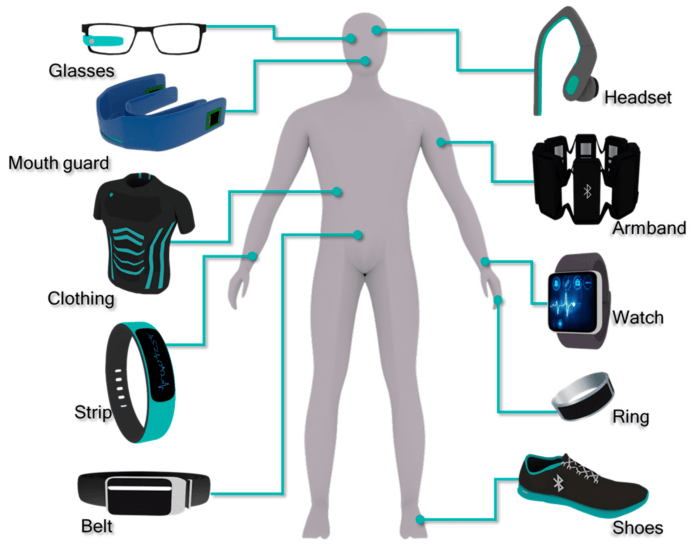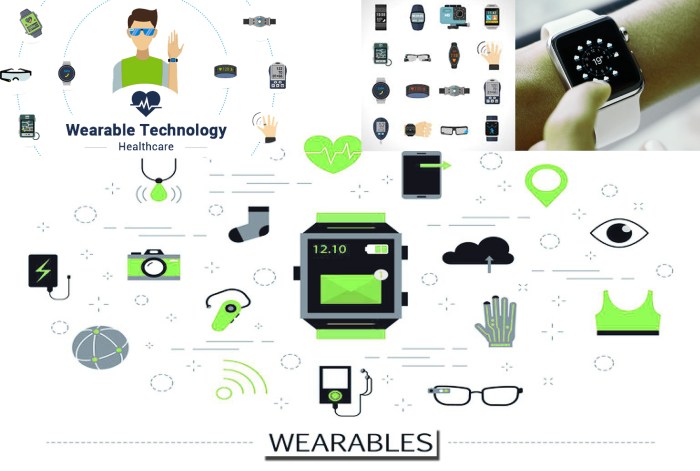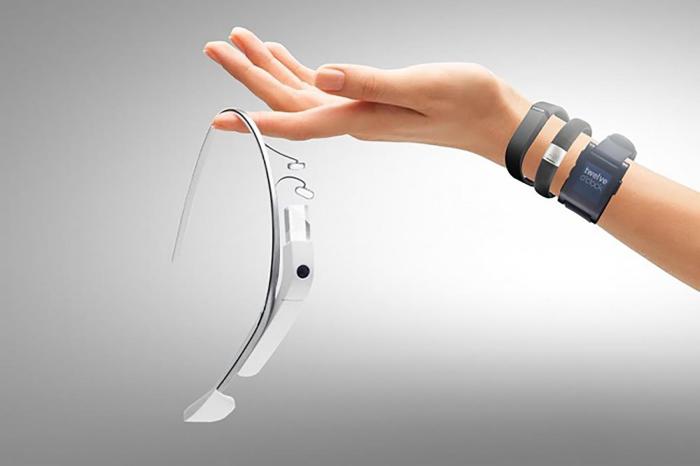From fitness trackers to augmented reality glasses, wearable technology is revolutionizing the way we live, work, and play. In this comprehensive guide, we explore the diverse range of wearable technology examples, their applications, benefits, and future trends.
Applications of Wearable Technology
Wearable technology has found its way into various industries and sectors, transforming our lives and enhancing experiences. From healthcare and fitness to entertainment and beyond, wearable devices offer a wide range of applications.
In the healthcare industry, wearable technology empowers individuals to monitor their health and well-being. Fitness trackers and smartwatches track steps, heart rate, and sleep patterns, providing valuable insights into personal health metrics. Additionally, wearable devices can monitor chronic conditions, such as diabetes and heart disease, allowing for proactive management and early intervention.
Fitness
In the fitness realm, wearable technology plays a crucial role in tracking progress and achieving fitness goals. Fitness trackers and smartwatches provide real-time data on calories burned, distance covered, and workout intensity. This information helps users optimize their workouts, stay motivated, and make informed decisions about their fitness routines.
Entertainment
Wearable technology has also made its mark in the entertainment industry. Smart glasses and augmented reality headsets offer immersive experiences, allowing users to interact with virtual worlds and digital content. These devices enhance gaming, provide interactive entertainment, and facilitate virtual tourism.
Benefits of Wearable Technology

Wearable technology devices offer a wide range of advantages and benefits that can enhance our health, productivity, and convenience. These devices are designed to be worn on the body, allowing them to collect and track data, provide notifications, and offer various functionalities that can improve our daily lives.
Improved Health and Well-being
Wearable technology can significantly contribute to our health and well-being. Fitness trackers, for example, can monitor our steps, heart rate, and calories burned, providing valuable insights into our physical activity levels and encouraging us to stay active. Sleep trackers can monitor our sleep patterns, helping us identify and improve our sleep quality.
Additionally, some wearable devices can track blood glucose levels, blood pressure, and other health metrics, allowing individuals to better manage their health conditions.
Increased Productivity
Wearable technology can also enhance our productivity. Smartwatches, for instance, allow us to receive notifications, read emails, and even make calls without having to take out our phones. This can save us time and help us stay focused on our tasks.
Some wearable devices also offer features like GPS navigation and voice commands, further increasing our efficiency and convenience.
Enhanced Convenience
Wearable technology provides numerous conveniences that can simplify our daily routines. Smartwatches can act as digital wallets, allowing us to make payments without carrying cash or cards. Fitness trackers can automatically track our activities, eliminating the need for manual logging.
Some wearable devices can even control smart home devices, such as lights, thermostats, and music systems, offering hands-free control over our home environment.
Challenges and Limitations of Wearable Technology: Wearable Technology Examples
While wearable technology offers numerous benefits, it also faces several challenges and limitations that hinder its widespread adoption and usage.
Privacy and Data Security
Wearable devices collect and transmit sensitive personal data, raising concerns about privacy and data security. Issues such as unauthorized access, data breaches, and misuse of personal information pose significant risks.
Battery Life, Wearable technology examples
Wearable devices typically have limited battery life, which can be a major inconvenience for users. Frequent charging and the need to carry additional power sources can detract from the convenience and practicality of these devices.
User Adoption
User adoption of wearable technology has been slow due to various factors, including cost, limited functionality, and lack of perceived value. Convincing users to integrate wearable devices into their daily lives remains a challenge.
Potential Solutions
Addressing these challenges requires a multi-faceted approach:
- Implementing robust security measures and data protection protocols to safeguard user privacy and prevent data breaches.
- Developing more energy-efficient devices and wireless charging technologies to extend battery life and enhance convenience.
- Conducting user research and designing devices that meet specific needs and provide tangible benefits to users.
Future Trends in Wearable Technology

Wearable technology is rapidly evolving, with new advancements and applications emerging all the time. As we look to the future, several key trends are expected to shape the development and adoption of wearable devices.
Potential Applications and Implications
Wearable technology has the potential to transform various aspects of our lives. In the future, we can expect to see wearable devices being used for:
Enhanced healthcare
Wearable devices can monitor vital signs, track sleep patterns, and provide personalized health insights. This data can be used to improve overall health and well-being, as well as detect and manage chronic conditions.
Personalized experiences
Wearable devices can collect data on our preferences, habits, and surroundings. This information can be used to create personalized experiences, such as tailored recommendations, optimized workouts, and customized notifications.
Improved safety
Wearable devices can incorporate features like fall detection, GPS tracking, and emergency alerts. These features can enhance personal safety, particularly for seniors and individuals with disabilities.
End of Discussion

As wearable technology continues to evolve, we can expect even more innovative and groundbreaking applications that will enhance our lives in countless ways. From healthcare to entertainment, the future of wearable technology is full of possibilities.
Questions and Answers
What are the most common types of wearable technology?
Fitness trackers, smartwatches, augmented reality glasses, and virtual reality headsets are among the most popular types of wearable technology.
How can wearable technology improve my health?
Wearable technology can track your activity levels, heart rate, and sleep patterns, helping you make healthier choices and improve your overall well-being.
What are the benefits of using wearable technology in the workplace?
Wearable technology can increase productivity, enhance collaboration, and improve safety in the workplace.